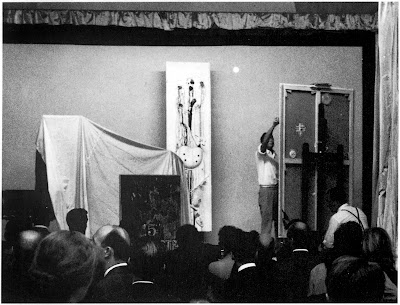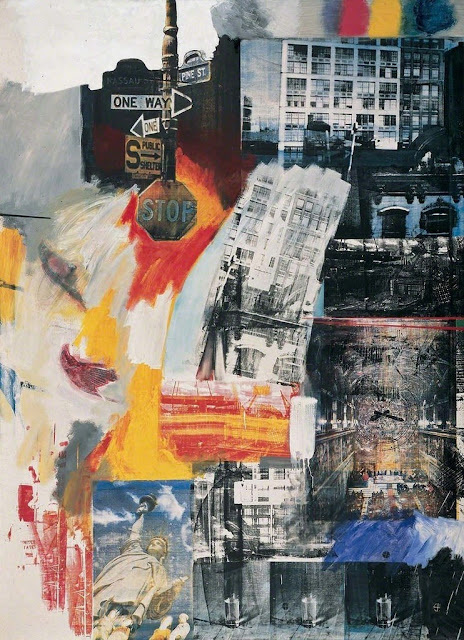Dance, Set Design, and Choreography
In addition to making visual art in a wide variety of media Robert Rauschenberg was also deeply involved in dance and performance art for most of his career. His earliest involvements with modern dance occurred through his friend, the choreographer, Merce Cunningham for whom he made props, sets and costumes. Famousely, one of these collaborations included a piece in which Cunningham danced with a chair strapped to his back. At one point Cunningham crouches down - letting the chair rest on the floor - so that his dance partner can sit on it... The dance continues with a series of movements performed while seated...
Starting with Pelican (1963), Rauschenberg would go on to start choreographing some of his own dance/performance pieces. In many ways, this was a natural extension of his combines. Performance seemed like the logical outlet for his creative energies as he sought to make his work more environmental.
 |
| Pelican, 1963 |
Not unlike his combine paintings, Rauschenberg's dance pieces tend to re-imagine our relationship to conventional objects. Here he dons roller skates and parachute/umbrella-type contraption of his own design.
 |
| Map Room II, 1965 |
In the still above we see Rauschenberg himself involved in a performance of a piece which he choreographed, Map Room II (1965.) He is holding neon tubes. The electrical current which activates the tubes and lights them up is actually coursing through his body. This combination of innovation and unusual uses of technology along with a defiance of theatrical conventions would define his career both on and behind the stage.
 |
| Spring Training, 1965 |
 |
| Glacial Decoy, 1981 |
The degree to which this constantly changing imagery was allowed to distract from the dancers themselves is a sign of the trust and collaborative engagement which he had with Trisha Brown, the choreographer of these pieces. Both of them believed in upsetting or disrupting established cultural hierarchies (as we see in much of Rauschenberg's work.) They both worked together to fashion a theatrical experience in which music, set design, costuming, and performance were all given both equal importance and an unprecedented degree of independence from each other.




Comments
Post a Comment